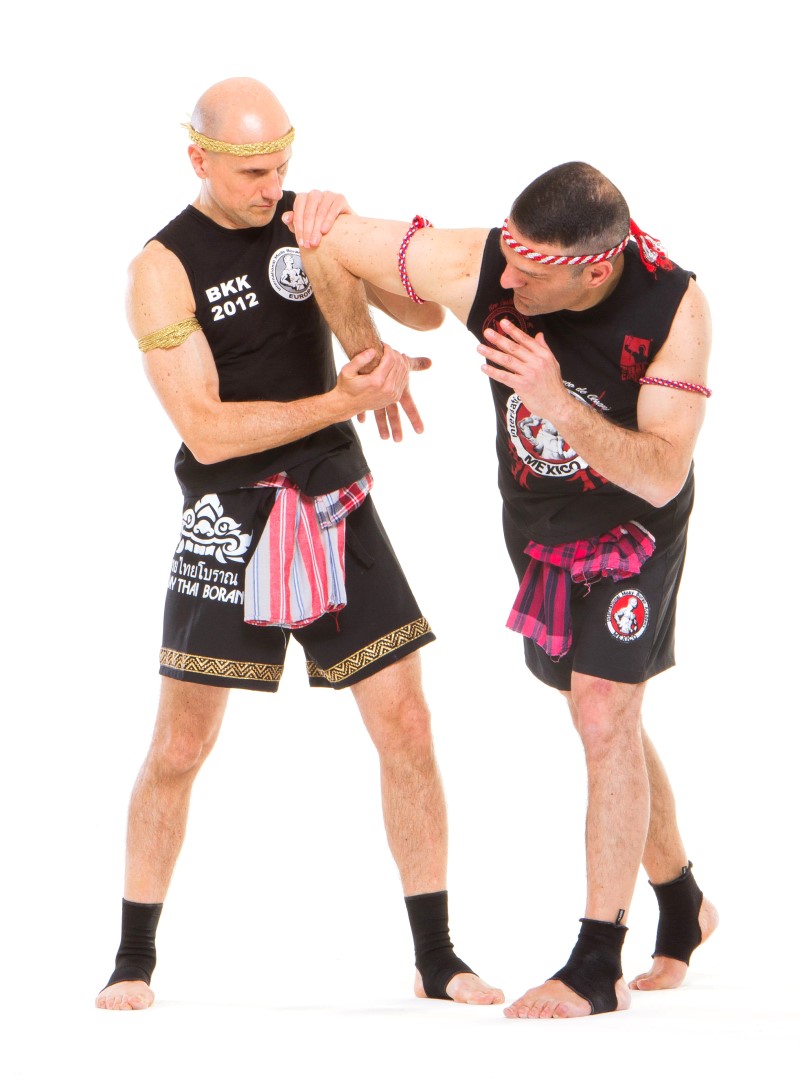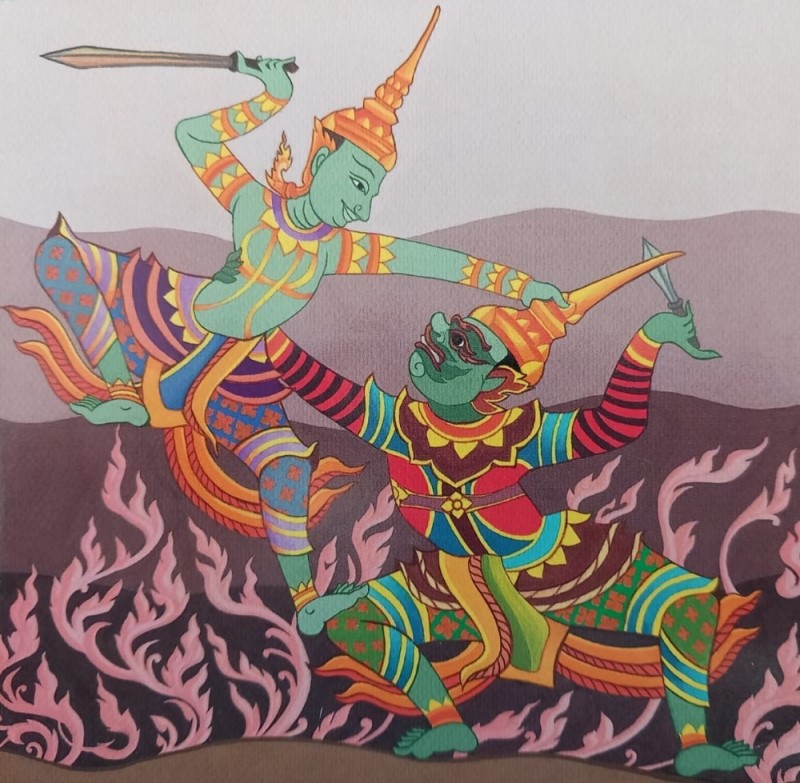
From myth to Muay: the Thai Art of War of Phra Ram.
By Marco De Cesaris
“So you want to learn Muay Thai Boran?” the old Master asked.
“Yes, Sir” the excited student answered.
“Very well, then. I can teach you how to punch, kick and break the bones but if you really want to reach the heart of this ancient discipline you must know the culture of the people who created it: the Thai people”.
This is especially true. In fact, learning the techniques of Muay without understanding the traditions of the people of Siam can only lead to a superficial knowledge of this ancient Martial Art. Muay is indissolubly linked to Thai people: their culture permeates all aspects of their Art of Self Defence. Therefore, all dedicated students of Muay Boran must carefully study the history, customs and ancestral traditions of the Thais. The question is: where to start from? For a Muay Thai practitioner the best starting point is doubtlessly the Siamese Epic par excellence, the Ramakien.
1. The original Indian Ramayana and the Thai Ramakien
The original version of this epic was written in Sanskrit more than 2000 years ago by the sage Valmiki. The theme of the kidnapping and rescue of the Princess Sida has been used many times by Siamese poets to write “thai versions” of the original story. However, the most famous version of Valmiki’s epic poem is the one written around the year 1807 during the reign of the founder of Chakri Dynasty, King Rama I. The Thai Ramayana is called Ramakien (In honour of Rama) and was cleverly adapted from the Indian original work in order to display the customs of Siamese way of life of the time. The story has been adapted and developed, the names of the main characters have been changed in order to be pronounced in Thai language, the landscapes, wildlife, plants and architecture cited in the Indian version were all modified and transformed into a picture of Thai life of the time. Also, the Art of War that is often a crucial element of the original plot, has been transformed according to the traditional Thai Art of War. For these reasons, a true fan of Muay Thai cannot but seriously study this true pillar of Thai culture: by doing so, he will much better understand the inner nature of the creators of this Art of Fighting.
2. The main characters
Among the many characters of Ramakien, several are warriors, seasoned experts in the many aspects of combat with or without weapons. Among the main characters of the plot we find two brothers, both expert warriors, Lord Rama and Lord Lakshmana (Phra Ram and Phra Lak in Thai language).
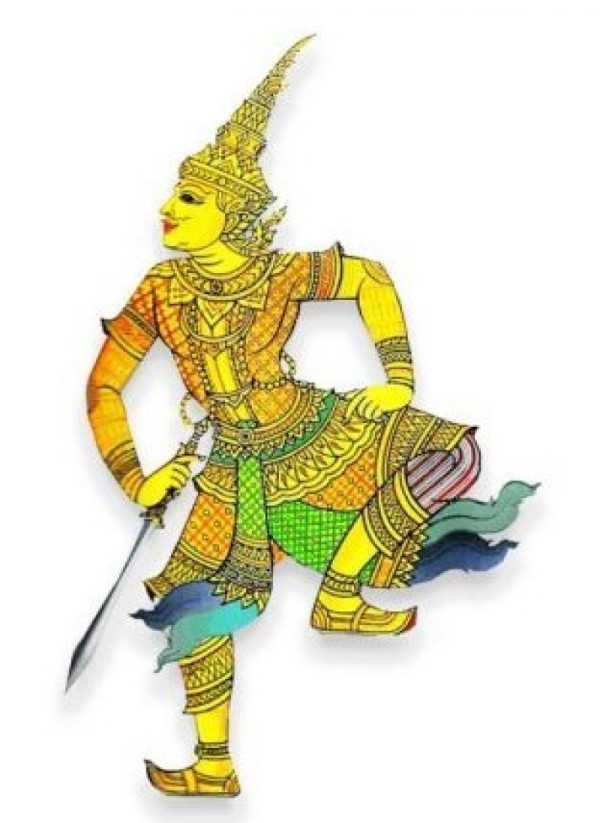
The story is built around the kidnapping of Phra Ram’s wife (Nang Sita) by the hands of the giant Totsakan, the evil King of Lanka (modern Sri Lanka) and the consequent war between two armies. The Army of Good is leaded by Phra Ram and is formed by thousands of monkeys whose King (Sukrip) and General (Hanuman) are ultimate warriors. The Army of Evil is headed by King Totsakan and is formed by powerful giants and demons. As mentioned, the Ramakien belongs to the very culture of Thai people. As a consequence, many of the characters have been a source of inspiration for the Khru Muay of the past who smartly devised the deadly fighting techniques we still practice nowadays. The deeds of Phra Ram, Phra Lak, Hanuman, Sukrip, Totsakan and many others were transformed into very effective combat strategy that were used by Siamese warriors in the ancient times over and over again.
3. From the Myth to the Art of Fighting: the lethal Muay Phra
At present, Muay Boran students can draw a lot of precious information from a clear understanding of those ancient combat strategies (Mai Muay). Moreover, a sound knowledge of the source of inspiration of the generations of Masters who created the Art of Muay will greatly help to “decode” the secrets of those ancestral Mai Muay, the way they were meant to be. Along the centuries, the characteristics and deeds of some specific characters heavily influenced the experts of Muay in their process of creation of martial techniques. The most notorious is clearly the white Wanorn, Hanuman, the son of the God of Wind. However, also the warrior skills of the two brothers Phra Ram and Phra Lak inspired many combat maneuvers that are still in use in most Muay Boran academies. In ancient times, these fighting techniques were collectively known as Muay Phra.
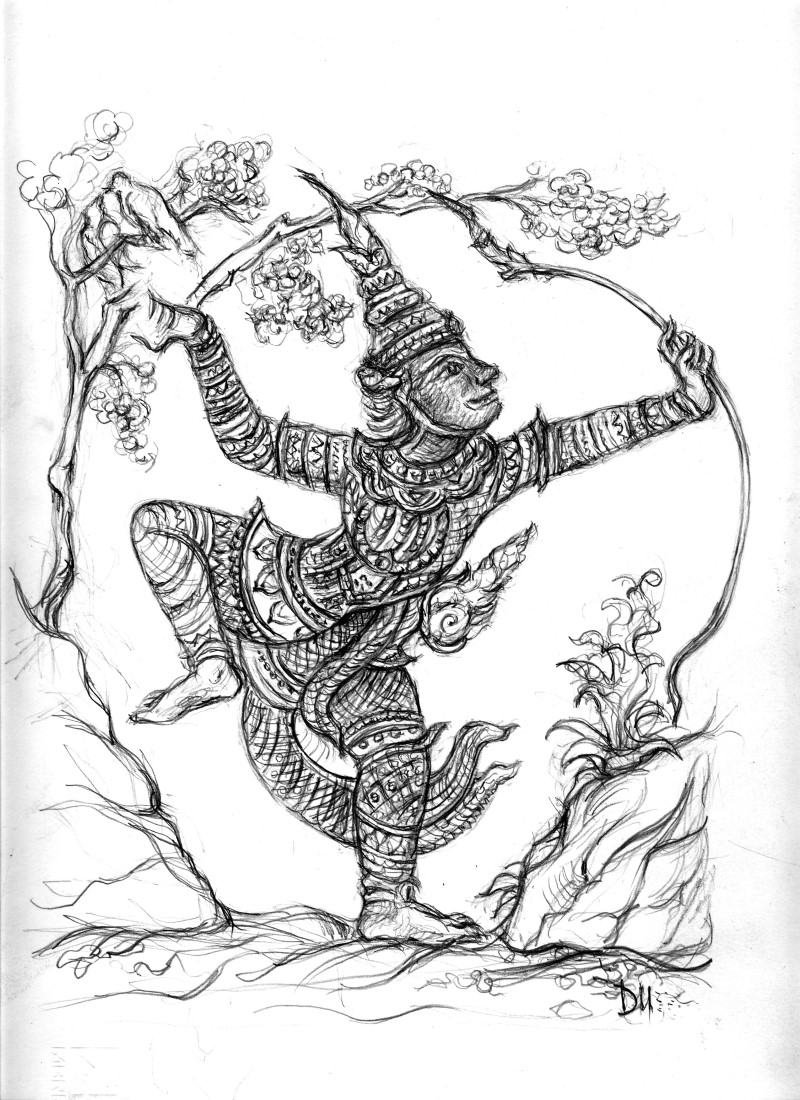
A warrior skilled in Muay Phra can punch, can jump and kick, can use his knees and elbows to attack, can break the opponents’ joints. Learning the ancient maneuvers of Muay Phra can turn a good boxer into a great fighter. Let’s analyse a few of this style’s renowned martial applications.
4. The martial techniques
If you want to learn Muay Phra, first you have to know the characteristics of the two warrior brothers. As the story goes, both Phra Ram and Phra Lak were trained in the subtleties of the Art of War by two Hermits (Ruesi in Thai language) named Vasit and Swamit. The Ruesis taught the two brothers all they knew about fighting. At the end of their training, Phra Ram and Phra Lak were well versed in both armed and un-armed combat skills. As a matter of fact, several very effective Muay Boran techniques that we learn and practice at present are related to the episodes of the life of these two highly skilled heroes.
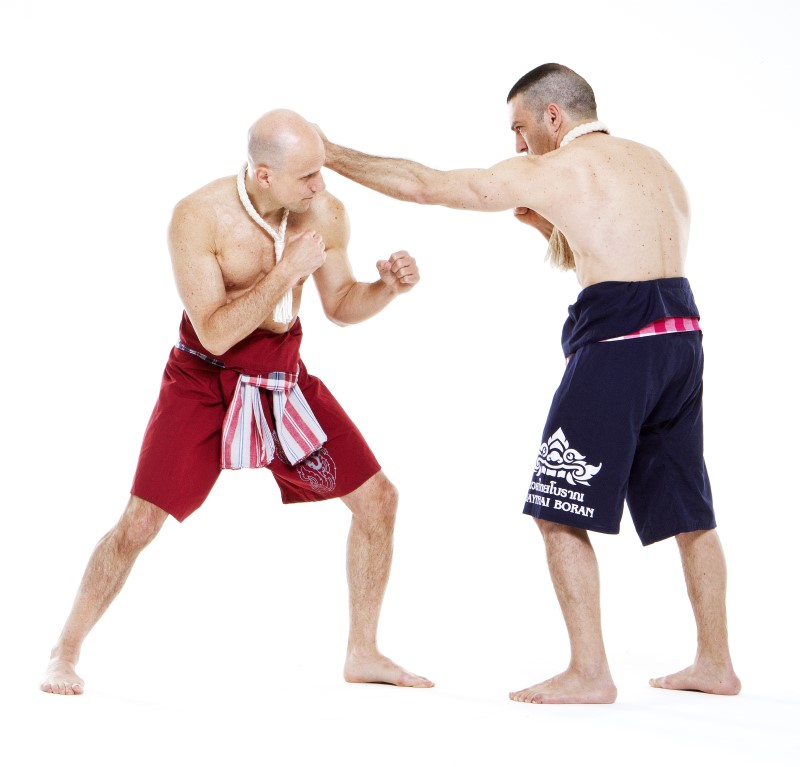
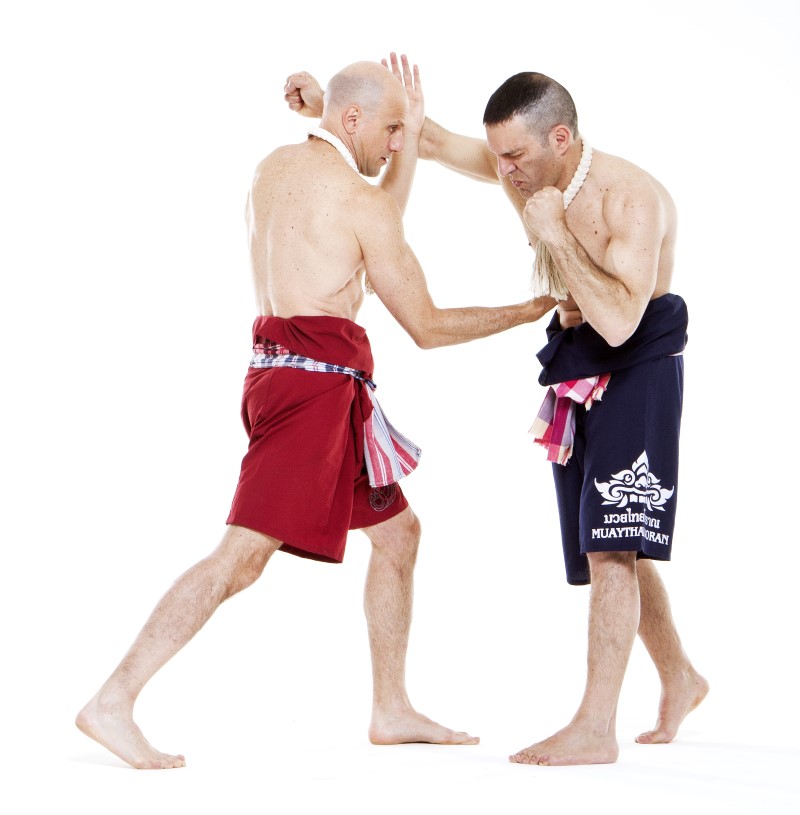
Let’s take a closer look at some of the best known Muay Boran techniques coming from Phra Ram’s warrior skills.
Phra Ram’s techniques.
I. A set of powerful maneuvers are inspired by the combat situations Phra Ram faces during the war with the Army of Evil. Let’s analyse some of those Mai Muay.
a. Phra Ram Yaeb Longka. Lord Rama breaks into Lanka. This technique is a strong maneuver that stops the opponent in his tracks, kicking the side of the neck with the shinbone. A real knock out move.
b. Phra Ram Ti Tab. Lord Rama attacks the (enemy) army. In a typical military maneuver, the Nak Muay attacks from the flanks with two different weapons: a punch and a swing kick. The punch is commonly aimed at the opponent’s head while the kick targets the body. If the technique is performed flawlessly, it is very difficult to block or evade both attacks.
c. Phra Ram Sakod Tab. Lord Rama surprises the (enemy) army. This fast attack is executed by suddenly jumping and throwing a straight kick aimed at the opponent chin. It is very difficult to avoid this vicious leg attack.
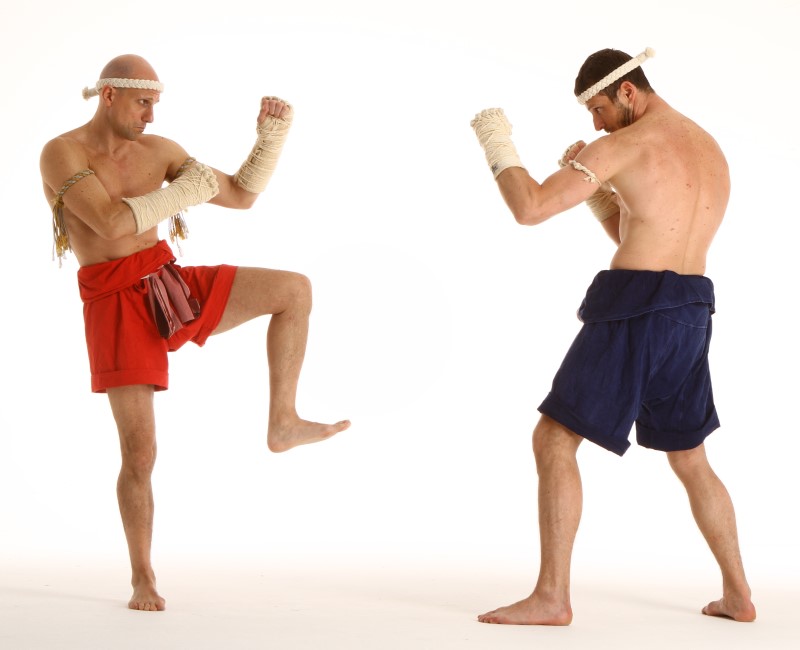
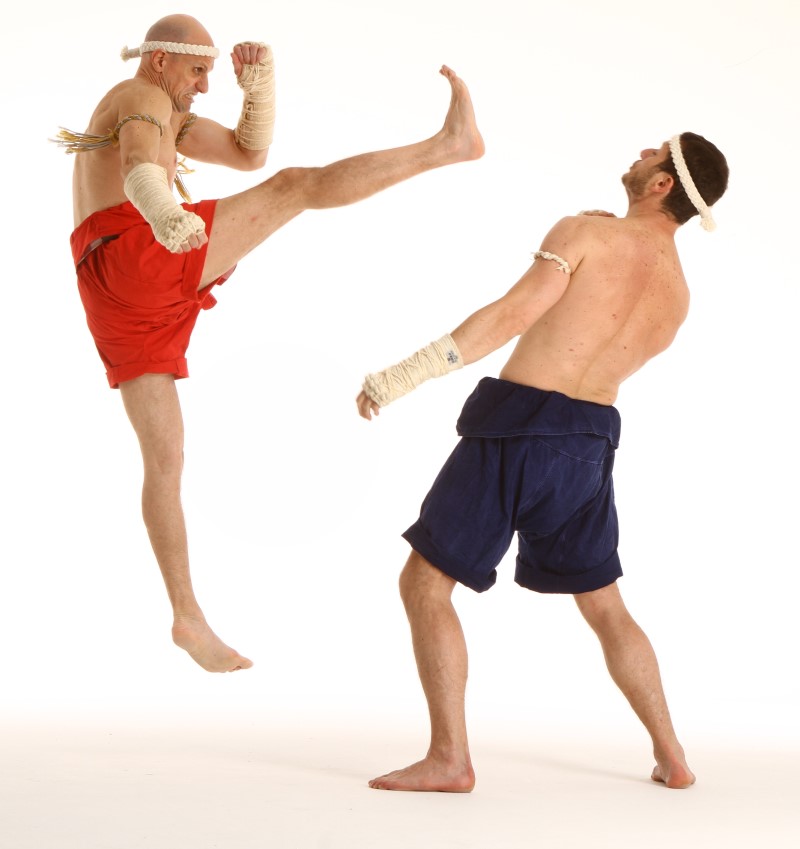
II. Another group of techniques is inspired by the time Lord Rama spent in the forest during his exile from Ayutthaya. Here are some of those maneuvers.
d. Phra Ram Tang Pa. Lord Rama cuts open the forest. A very strong elbow counter attack, usually executed against a punch or a series of punches. The target is the face or side of the head of the opponent. The elbow strike travels along a diagonal downwards path and packs a lot of power.
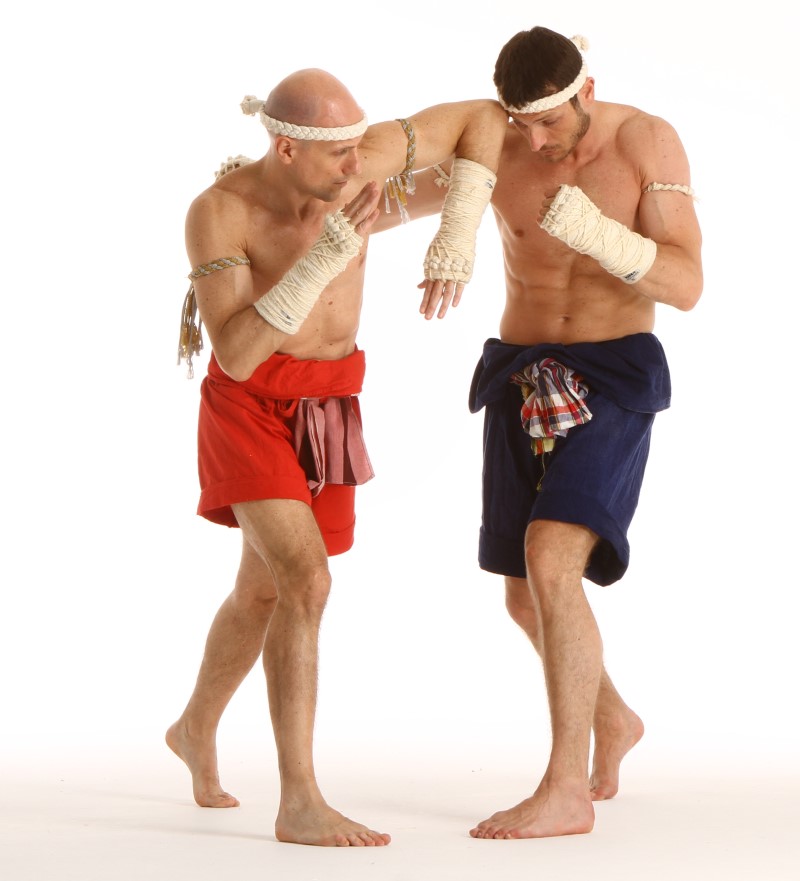
e. Phra Ram Den Dong. Lord Rama enters the forest. This spectacular Muay Boran technique employs a knee strike to attack the opponent’s face with devastating results. When the opponent bends his knees for whatever reason, the Nak Muay exploits the situation to step on his thigh and deliver a powerful knee strike to the opponent’s face or side of the head.
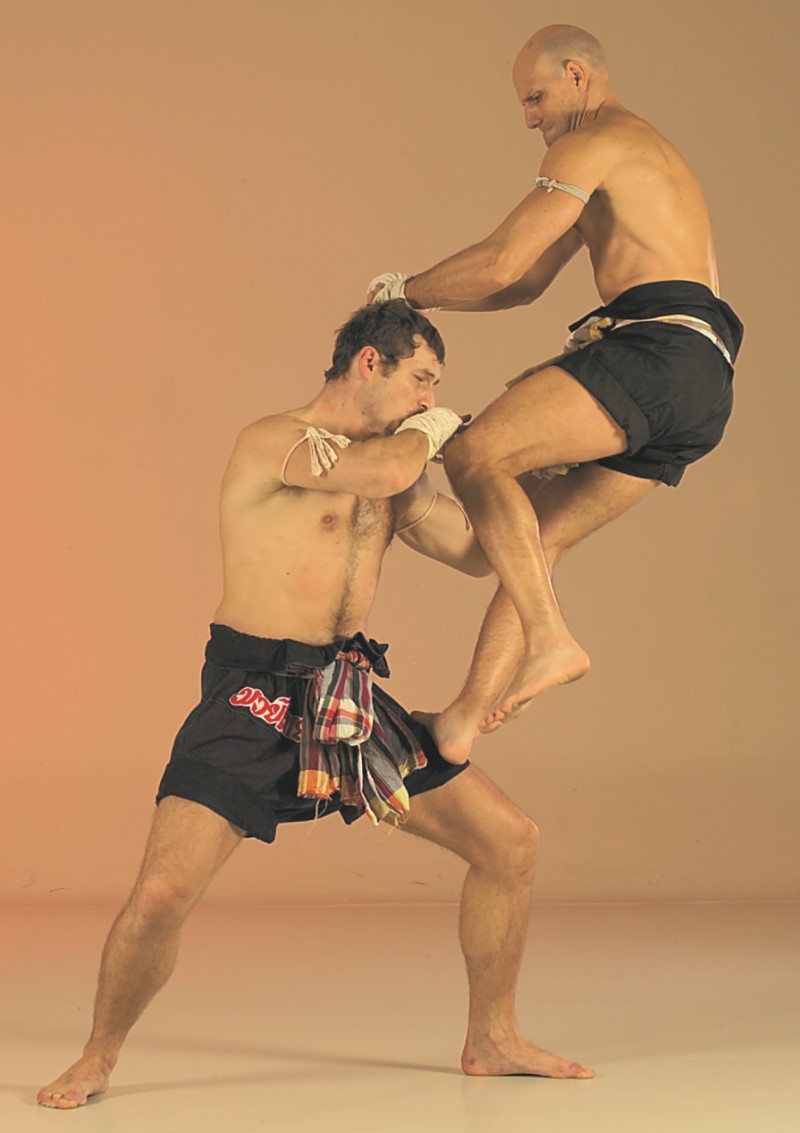
III. A third group of techniques refers to Phra Ram’s skill in using the noble weapon par excellence: the bow. Let’s see some of those ancient techniques.
f. Phra Ram Now Sorn. Lord Rama draws the bow. In this technique the Nak Muay employs a forearm parry to deflect the attack coming from above, open the opponent’s guard and counterattack with a vicious uppercut to the throat. The opponent’s attack can be an elbow or forearm strike or a downward hammer punch.
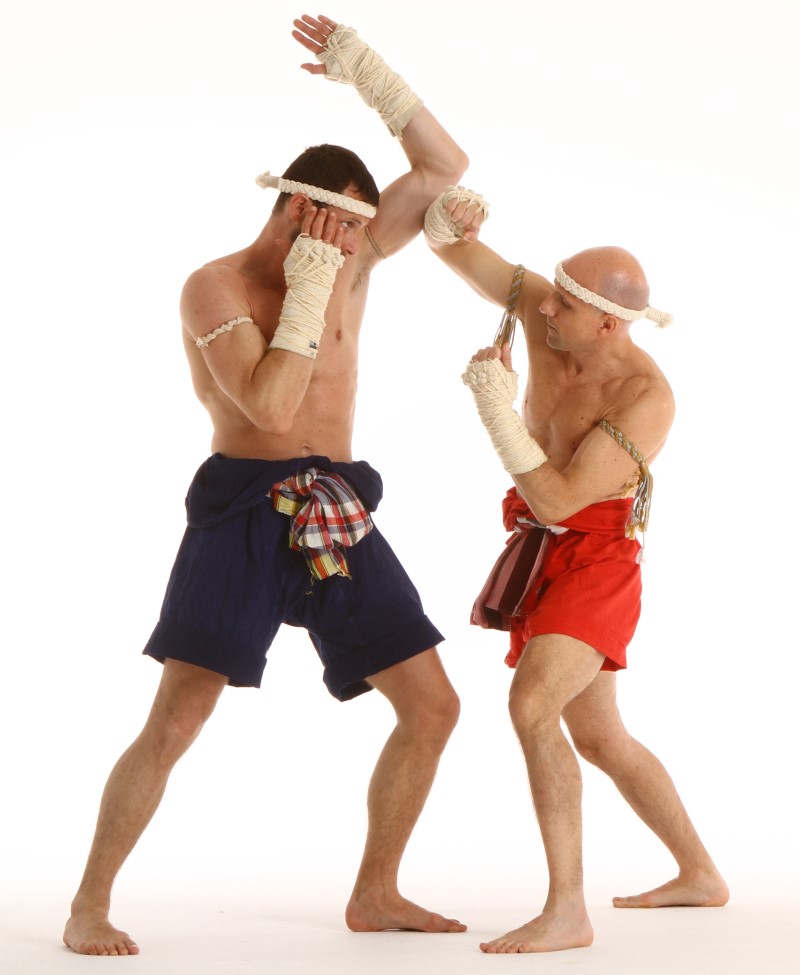
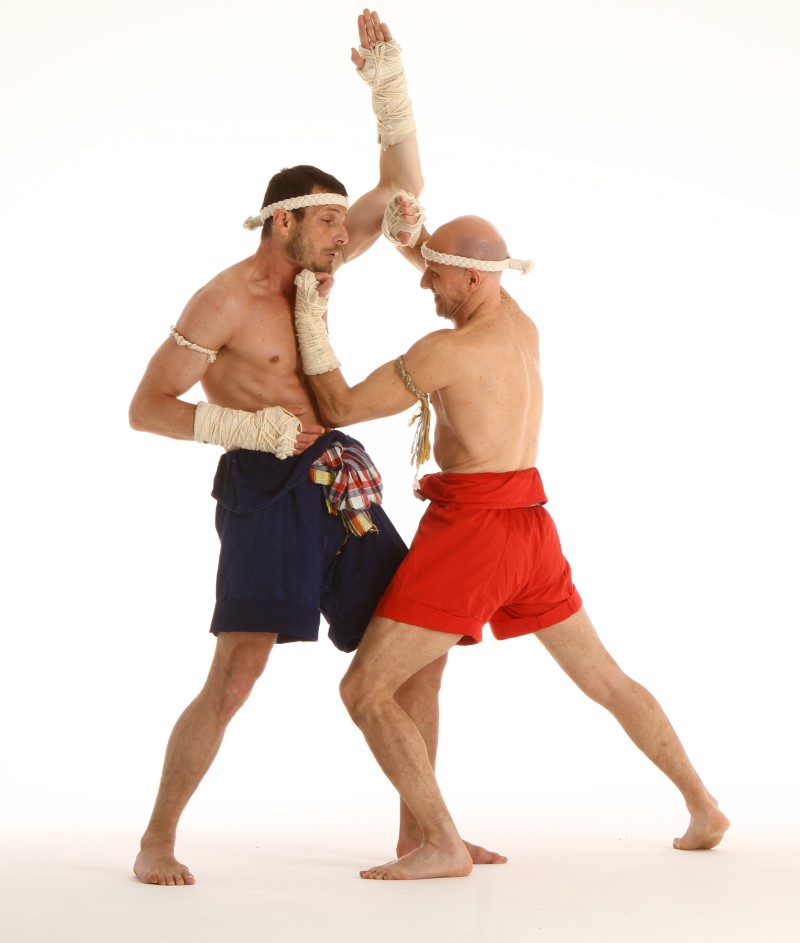
g. Phra Ram Hak Sorn. Lord Rama breaks the bow. This technique is an application of the ancient strategy of catching and breaking (Chap Hak in Muay jargon). Against an horizontal elbow attack the Nak Muay blocks the strike, seizes the attacking arm and twists it. The shoulder joint is put under great stress and as a result the opponent’s arm can be seriously damaged.
